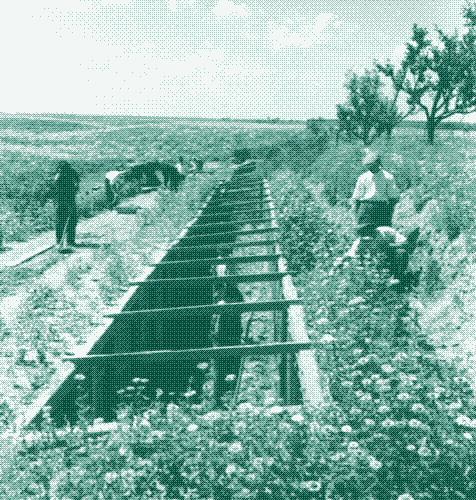
Citrus fruits (oranges, lemons, mandarins, tangerines, grapefruits, limes, pomeloes) are the highest-value fruit crop in terms of international trade. Citrus plants are not frost-hardy and can only be grown in tropical and subtropical climates – unless they are cultivated in fossil fuel heated glasshouses. However, during the first half of the twentieth century, citrus fruits came to be grown a good distance from the (sub)tropical regions they usually thrive in. The Soviets managed to grow citrus outdoors, where temperatures drop as low as minus 30 degrees Celsius, and without the use of glass or fossil fuels. By 1950, the Soviet Union boasted 30,000 hectares of citrus plantations, producing 200,000 tonnes of fruits per year.
The Expansion of Citrus Production in the Soviet Union
Before the first World War, the total area occupied by citrus plantations in the Soviet Empire was estimated at a mere 160 hectares, located almost entirely in the coastal area of Western Georgia. This region enjoys a relatively mild winter climate because of its proximity to the Black Sea and the Caucasus Mountain range – which protects it against cold winter winds coming from the Russian plains and Western Siberia.
Nevertheless, such a climate is far from ideal for citrus production: although the average winter temperature is above zero, thermal minima may drop to between -8 to -12 degrees Celsius. Frost is deadly to citrus plants, even a short blast. For example, at the end of the 19th century, the extensive citrus industry in Florida (US) was almost completely destroyed when temperatures dropped briefly to between -3 and -8 degrees Celsius.
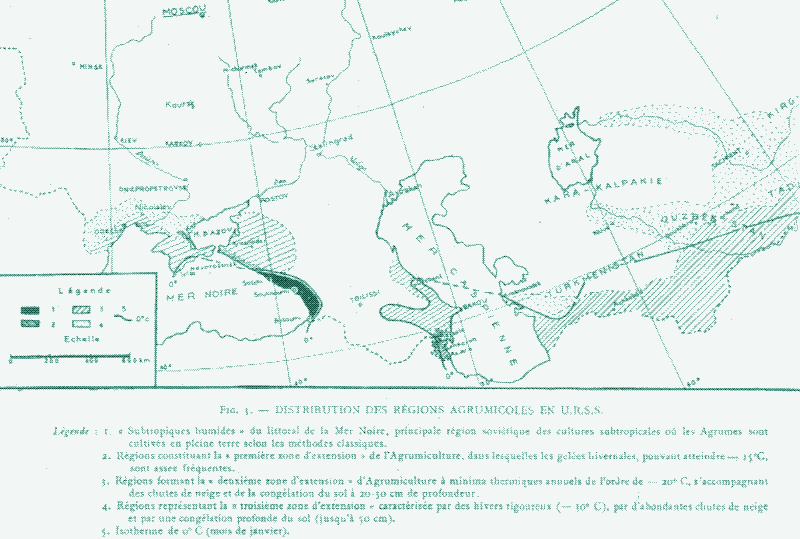
From the 1920s onwards, the Soviets extended the area of citrus cultivation to regions considered even less suited. Initially, citrus production extended westward along the Black Sea coast, a region unprotected by mountains, and where temperatures can drop to -15 degrees Celsius. This includes Sochi – which hosted the 2014 Winter Olympics – and the southern coast of Crimea. At the same time, citrus cultivation extended eastward to the west coast of the Caspian Sea, in Azerbaijan.
Citrus production was then spread to regions where winter temperatures can drop to -20 degrees Celsius, and where the ground can freeze to a depth of 20-30 cm: larger parts of the earlier mentioned zones, as well as Dagestan, Turkmenistan, Tajikistan, Uzbekistan, and the southern districts of Ukraine and Moldova. Finally, citrus cultivation was pushed further north in these regions, where winter temperatures can plummet to -30 degrees Celsius, and where the ground can freeze to a depth of 50 cm.
Frost was not the only obstacle to citrus cultivation in these parts of the world. The region is also characterised by excessive summer heat and strong, dry winds.
From Import Dependency to Self-Sufficiency
Before the first World War, almost all citrus fruits in ancient Russia came from abroad. The main suppliers were Sicily (for lemons) and Palestine (for oranges). Some 20,000 to 30,000 tonnes of citrus fruits were imported annually. Its consumption with tea, the national drink in Russia, meant lemon made up almost three-quarters of these imports.
In 1925, following the Russian Revolution and the civil war, citrus growing became the subject of planned development. The Communist Party was determined to become self-sufficient in citrus production, and no efforts were spared. They set up several research establishments and nurseries, as well as test fields in more than 50 locations.
By 1940, the acreage had grown to 17,000 hectares and production reached 40,000 tonnes, double the annual imports under the old regime. By 1950, the area planted with citrus fruits reached 30,000 hectares (56% mandarin trees, 28% lemon trees, 16% orange trees), and production grew to 200,000 tonnes of fruits per year.
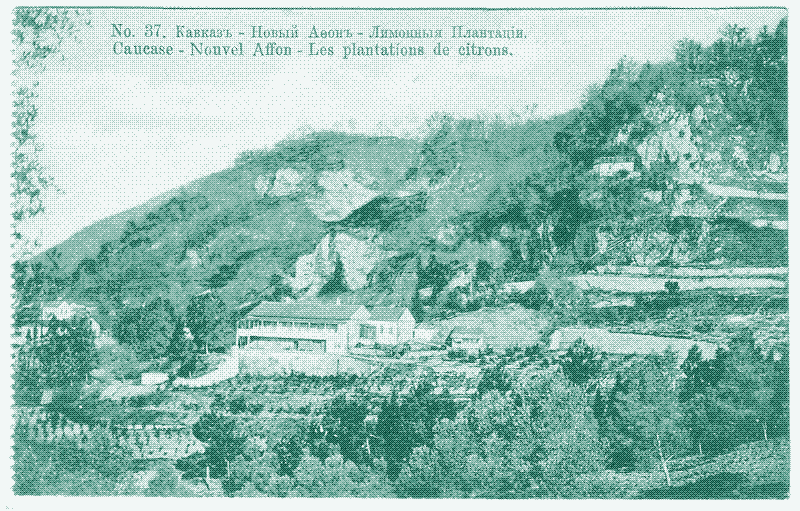
The large share of mandarin trees can be explained by the fact that they are the most cold-resistant of all citrus fruits, tolerating frosts to about -2 degrees Celsius. Lemon trees, on the other hand, are the least cold-resistant citrus variety.
There are three reasons why the Soviets managed to grow citrus fruits in regions that were (and are) considered totally unfit for it. First, they bred citrus varieties that were more resistant to cold. Second, they pruned citrus plants in radical ways that made them more resistant to cold, heat and wind. This eventually resulted in creeping citrus plants, which were only 25 cm tall. Third, they planted citrus plants in unlikely locations, most notably in trenches of up to two metres deep.
“Progressive cold-hardening”
Imported citrus varieties only survived in a few isolated points along the Black Sea coast, which enjoyed a particularly favourable microclimate. To better prepare citrus fruits for cold, Soviet citrologists followed a method called “progressive cold-hardening”. It allowed them to create new varieties which were adapted to local ecological conditions, a cultivation strategy which had originally been developed for apricot trees and grapes.
The method consists of planting a seed of a highly valued tree a bit further north of its original location, and then waiting for it to give seeds. Those seeds are then planted a bit further north, and with the process repeated further, slowly but steadily pushing the citrus variety towards less hospitable climates. Using this method, apricot trees from Rostov could eventually be grown in Mitchurinsk, 650 km further up north, where they developed apricot seeds that were adapted to the local climate. On the other hand, directly planting the seed of the Rostov apricot tree in Mitchurinsk proved unsuccessful.
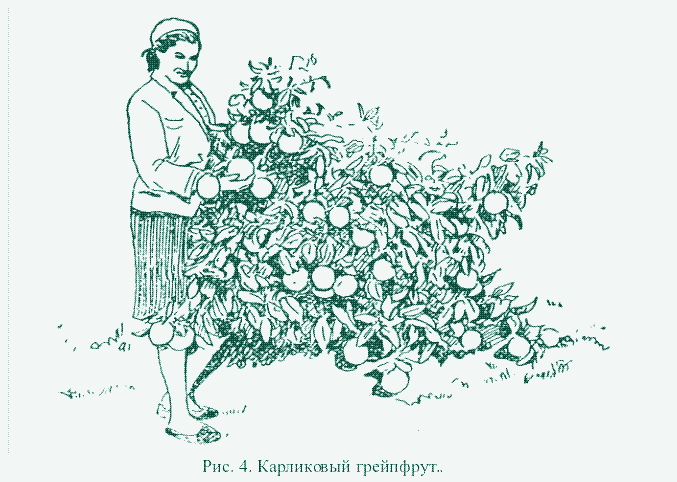
The method, developed following the observation that young plants started from seed adapt to the conditions of the new environment, also proved successful for citrus fruits – which retained high yields and high quality fruits. As well as “progressive cold-hardening”, from 1929 onwards the Soviet citrologists performed a methodological selection of cold-resistant varieties, which were hybridised with the best local varieties. This was facilitated by an extensive collection of citrus fruits, which included almost all representatives of the genus Citrus.
Dwarf and Semi-Dwarf Citrus Trees
In the main citrus growing centres worldwide, pruning citrus plants was very rare. Harold Hume, a renowned Canadian-American botanist, even advised to “keep pruning shears as far as possible from the citrus plantation”.
However, pruning was crucial to the cultivation of citrus plants in the Soviet region. First and foremost, pruning reduced the height of the citrus plants. Conventional lemon trees grow up to 5 metres tall, while orange trees can be 12 metres tall. On the other hand, even prior to the 1920s, Soviets worked with dwarf and semi-dwarf citrus trees, which were only 1 to 2 metres tall. These trees were further pruned to have compact crowns.
More compact trees have two advantages. First, closer to the ground, temperature variations are smaller and wind speed is lower. Second, smaller trees are easier to protect against the elements. In the region with the mildest climate, where an initial 160 ha of citrus fruits were grown, plantations were often located on terraces or on steep slopes, taking up the smallest piece of land with a favourable microclimate.
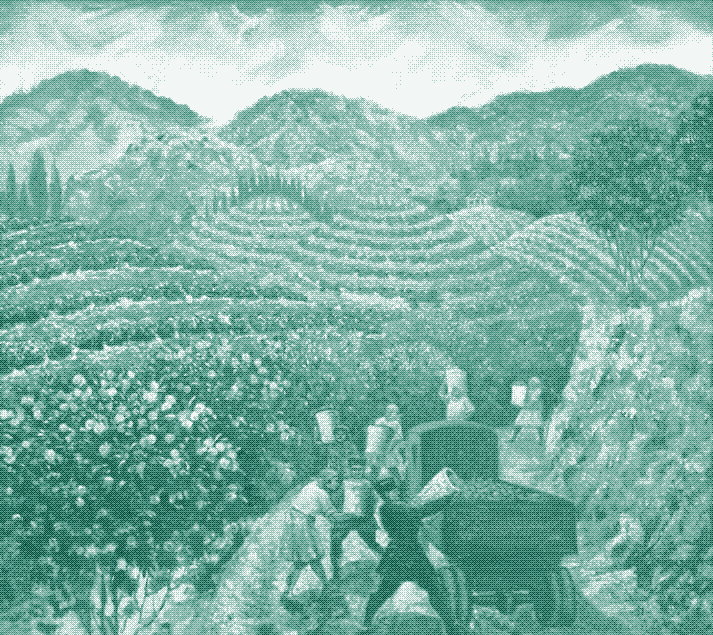
During winter, individual citrus plants in these plantations were protected by a shelter made of cheesecloth or straw mats, supported by a light frame of poles. Plantations were also surrounded by windbreak curtains, arranged in such a way that they mitigated both the cold winter winds and hot, dry summer winds. These curtains also channeled the cold air masses descending from the tops of the hills outside of the plantations.
Further protection against cold and wind was generated by planting trees very close together – up to 3,000 plants per hectare. Excessive summer heat was counteracted by spraying whitewash on the upper part of the leaves, which lowered their temperature by about 4 degrees Celsius. All these methods work for large-stemmed citrus trees, but of course they are much cheaper and easier to perform on trees with a height of only 1 to 2 metres.
Creeping Citrus Trees
Training small citrus plants was key to extending their cultivation across all regions of the Black Sea coast, where until then it had been impossible. This was achieved by pruning and guiding citrus plants into a creeping form, which reduced their height to a mere 25 cm.
The crown of creeping citrus plants was formed in two ways. In the first method, the trunk of the tree took an inclined position as soon as it left the soil. The main branches of the crown, formed in a unilateral fan, touched the ground, and so did the fruits. In the second method, the 10-15 cm tall stem was kept straight while the main branches developed radially at an angle of 90 degrees to the trunk, thus (seen from above) forming a spider-like crown. In this case, the branches and the fruits did not touch the ground, and this proved to be the most successful method.
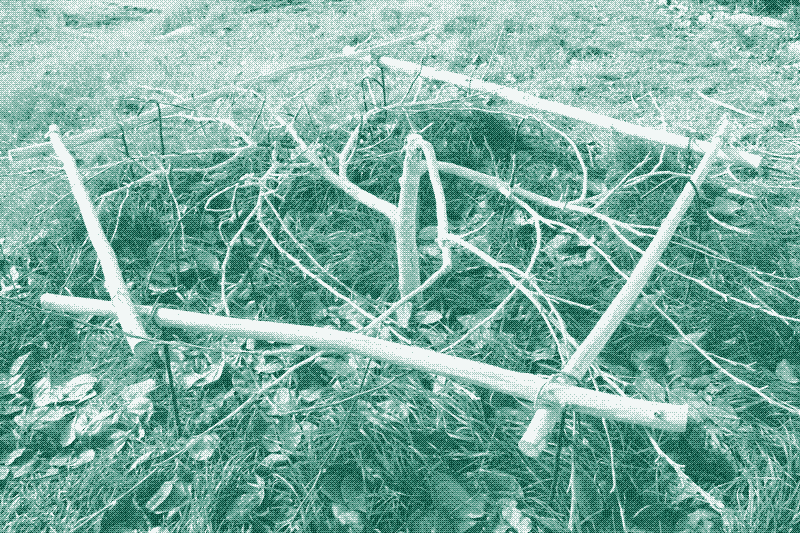
Creeping citrus trees offered even better protection against cold and wind compared to dwarf and semi-dwarf trees, because the creeping crown created a microclimate that softened both the summer maxima and the winter minima. During a 10-year long test, it was found that in winter, the air layer at the level of the creeping crown was on average 2.5 to 3 degrees Celsius warmer than the air layer at 2 metres above the ground. In summer, during hot weather, the difference in temperature could exceed 20 degrees Celsius.
Wind protection was just as effective. The wind speed at 2 metres above the ground reached an average of 10.4 metres per second, while it was only 1.8 metres per second at the level of creeping lemon trees. This limited dehydration of the crown so that less water was needed.
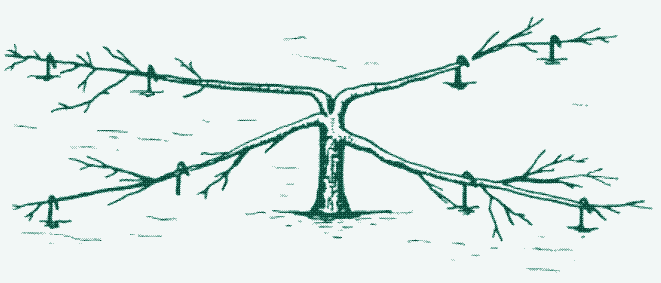
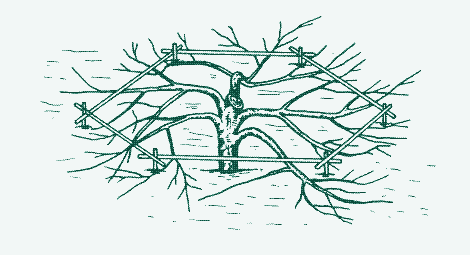

Logically, the very small size of creeping plants made it even easier and cheaper to protect them against the elements. Moreover, as a protection strategy it proved to be more effective: during the winter of 1942-43, when temperatures along the Black Sea coast went down to -15 degrees, creeping lemon trees protected by a double layer of cheesecloth and by windbreaks did not suffer in any way, while similarly protected taller-stemmed lemon trees froze to the roots.
Perhaps surprisingly, creeping citrus plants had higher yields than semi-dwarf citrus plants. The fruits ripened earlier, and produced more fruits, especially during the first years.
Cultivating Citrus Trees in Trenches
None of the above mentioned cultivation methods were sufficient to grow citrus fruits in regions where the ground froze and where winter temperatures dropped below -15 degrees. Here, citrus plants were cultivated in trenches. Obviously, growing citrus fruits in trenches was only practical with dwarf and – most often – creeping plants. In this method, soil heat protects citrus fruits from frost.
The depth of the trenches varied from 0.8 to 2 metres depending on the winter temperature, the depth to which the ground froze, and the water table. The trees could be planted in single or double rows. Trenches were generally trapezoidal in section to improve light conditions. They were roughly 2.5 metres wide at the bottom and 3 metres wide at the top for single rows of plants, and 3.5 metres wide at the bottom and 4 metres wide at the top for double rows of plants.
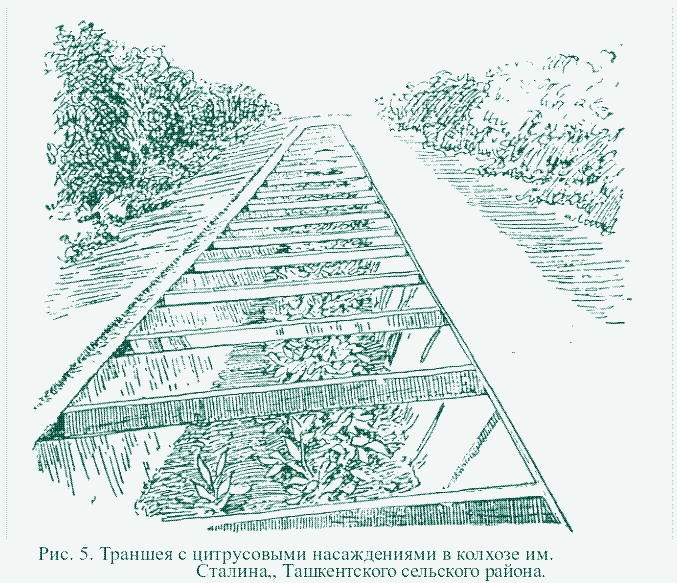
If necessary, the walls were coated with clay or reinforced with brick or shell rock. Inside the trench, the plants were positioned 1.5 metres apart from each other, and when two rows were planted, each plant in the first row was located between two plants in the second row. The length of the trenches depended on the nature of the terrain, but did not surpass 50 metres.
Trenches were located on level ground or light slopes, oriented from east to west in order for optimal sunlight during the winter months. They were spaced apart 3-5 metres from each other when they contained a single row of plants, and 4-6 metres when they had a double row of plants. Trenches could be connected to each other, which made it more convenient to care for the plants.
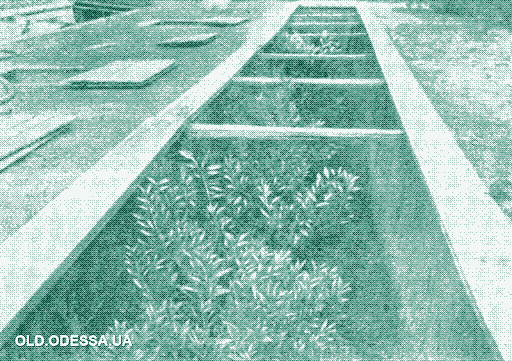
The space in between the trenches allowed for the placing of shade screens or planting of natural shading plants. These increased the humidity in the trenches and protected the citrus plants from overheating in summer.
Covering the Trenches
During the summer, plants received the same care as those planted in the ground under “ordinary” conditions. When winter came, the trenches were covered with 2 cm thick wooden boards and single or double straw mats, depending on the climate. This kept the soil heat in the trench, while keeping precipitation out. If a layer of snow covered the boards, it was left in place for extra insulation. The boards were sloped at an angle of 30-35 degrees. When in winter the temperature rose above zero degrees Celsius, the cover was raised on the south side or completely removed during the day.
This method cannot be applied to any plant. Citrus plants tolerate very low light levels for 3-4 months per year, provided that the temperature of the air in contact with the crown is maintained between 1 and 4 degrees Celsius. At this temperature, the metabolism of the plants weakens, which improves their resistance to cold.
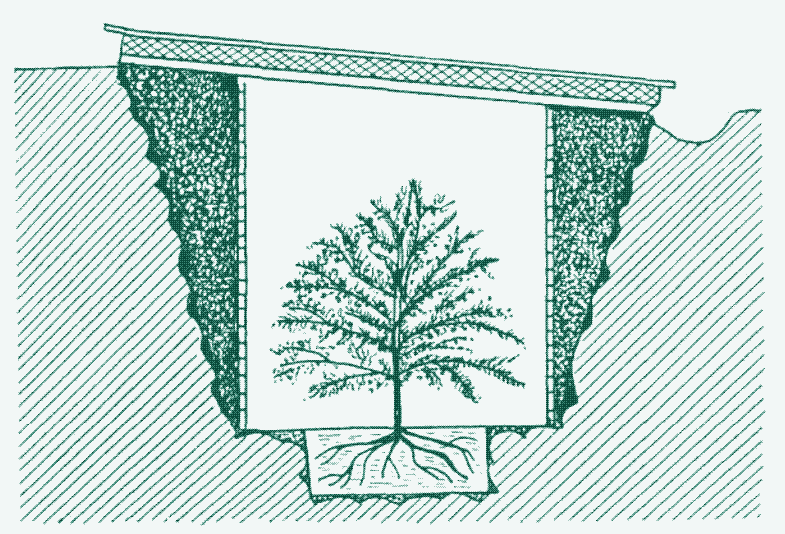
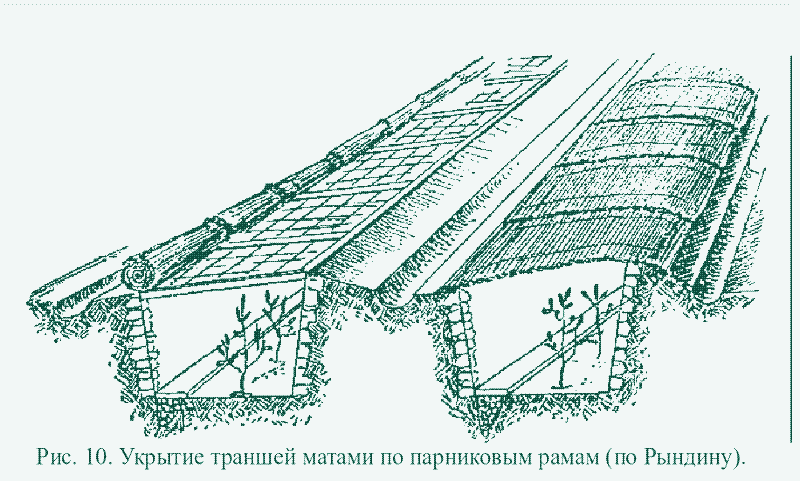
Glass was only used sparingly. Wooden boards gave much better frost protection, were much cheaper, and could be made from local materials. The plants needed some stray light, so that up to a quarter of the trench shelter area was made of glass frames, which were covered with straw mats as well as a top cover of earth and clay. Only a few openings here and there provided light and ventilation.
The cultivation of creeping citrus plants in trenches, although labour-intensive, was a simple method that did not require large investment, and provided high yields (80 to 200 fruits per stem per year) as well as high quality tropical fruits. All types of citrus fruits were grown in trenches.
Other Cultivation Methods
Apart from trenches, Soviet citrologists used other types of shelters to grow citrus plants – all of which were more effective with smaller sized trees (usually dwarf cultures). Some included (usually sparse) use of fossil fuels.
A first example is the cultivation of citrus fruits with annual transplantation. Citrus plants spent the summer outdoors, but as winter approached, they were dug up with the clod of earth surrounding their roots, and transported to wintering sheds, where they were crammed together for as long as it was freezing outside. In spring, they were moved back to their original location. Where the winters were relatively mild, these winter sheds were light wooden buildings that were generally unheated. In colder regions, they were made of masonry, half buried into the ground, and fitted with heating devices.
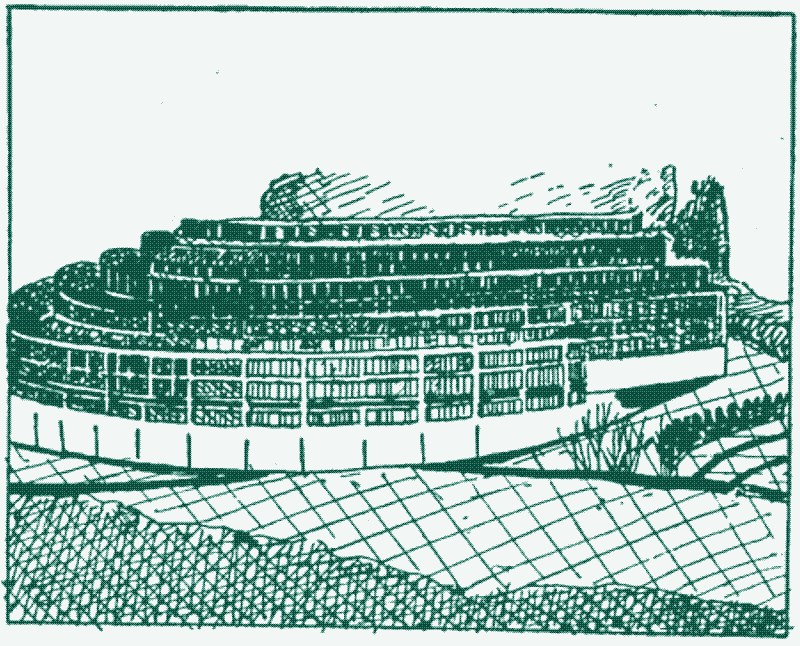
Citrus plants were also grown in unheated glasshouses. These “limonaria”, located on the Black Sea coast, were semi-circular glasshouses, built around particularly well-exposed hills with terraces. The trees were grown as espaliers – a method reminiscent of the fruit walls in northern European countries, which facilitated cultivation of peaches and other Mediterranean fruits at high latitudes.
Heated glasshouses, which used electric heating and artificially controlled carbon dioxide and humidity throughout the year, were only used in industrial centers located beyond the Arctic Cycle. Finally, citrus fruits were grown throughout the Soviet Union in pots or boxes in apartments, schools, public buildings, and even in the glass halls of factories and workshops – making use of the waste heat from space heating or industrial processes (steam or hot water).
Few of these methods would have been profitable under a free trade regime. Considerable research investment went into kickstarting domestic citrus production. Although most methods did not require fossil fuels and were possible using cheap and locally available materials, they were very labour intensive. Domestic citrus production was only possible because it was sheltered – not only from frost, but from foreign competition too.
Thanks to Alexandrine Maes.
Sources
Les Agrumes en U.R.S.S., Boris Tkatchenko, in Fruits, vol.6, nr.3, pp.89-98, 1951. http://www.fruitiers-rares.info/articles21a26/article24-agrumes-en-URSS-1-Citrus.html & http://www.fruitiers-rares.info/articles51a56/article53-agrumes-en-URSS-2-Citrus.html
М. А. КАПЦИНЕЛЬ, ВЫРАЩИВАНИЕ ЦИТРУСОВЫХ КУЛЬТУР В РОСТОВСКОЙ ОБЛАСТИ РОСТОВСКОЕ КНИЖНОЕ ИЗДАТЕЛЬСТВО Ростов-на-Дону —1953. (“Growing citrus cultures in the Rostov region”, M.A. Kaptsinel). http://homecitrus.ru/books.html
Katkoff, V. “The Soviet Citrus Industry.” Southern Economic Journal (1952): 374-380. https://www.jstor.org/stable/1054452?seq=1. Full version here: https://sci-hub.tw/https://www.jstor.org/stable/1054452?seq=1
Volin, Lazar. A survey of Soviet Russian agriculture. No. 5. US Department of Agriculture, 1951. https://archive.org/details/surveyofsovietru05voli/page/n3/mode/2up. See page 151.
Мандарин – туапсинский господин?, СВЕТЛАНА СВЕТЛОВА, 16 ДЕКАБРЯ 2018 https://tuapsevesti.ru/archives/40995
http://www.agrumes-passion.com/plantation-entretien-f49/topic4913.html
https://www.supersadovnik.ru/text/yablonya-neobychnye-sposoby-formirovaniya-1003334
https://selskoe_hozyaistvo.academic.ru/2847/стелющаяся_культура
Reactions
To make a comment, please send an e-mail to solar (at) lowtechmagazine (dot) com. Your e-mail address is not used for other purposes, and will be deleted after the comment is published. If you don’t want your real name to be published, sign the e-mail with the name you want to appear.
Reactions
Sean O'Brien
Fascinating article, but I did have a couple questions.
What are some of the disadvantages of smaller trees? I would assume that tightly-pruned crowns would make it harder for the fruits to grow. How were pests kept away from the ground-creeping varieties? How were the fruits kept off of the wet ground?
Jude
I imagine a great deal of rain pooling at the bottom of the trenches during summer rains. Wouldn’t this kill the trees?
Ron
Fantastic article. It has left me wondering about soil types in the areas where these technologies were successfully implemented.
Soils in trenches must have been free draining at the very least.
Oliver Drerup
I am very interested in Russian horticulture and want to thank you for making this valuable information available.
I have worked in residential construction in Russia (Tver Region) and was struck by the horticultural practice and plant selection employed by the Transport and Highway Departments in the Region. It appears to me that the plant material and maintenance regime required to sustain safe and attractive highway verges and medians is much better thought through in Russia than where I make my home in Ontario, Canada. Russia seems to rely less on chemical interventions and the byways look better and requires less investment.
I want to encourage you to research this aspect of Russian horticulture and share what they know with the world. Roadway planting is a major expense and should be much better designed for low intensity maintenance, particularly in colder climates. I have attempted to research this area a bit and find good information difficult to locate. Many thanks for your consideration of this issue and thank you again for your excellent work.
Graham Ford
Another brilliant article, Kris. Thank you!
Tom
I wonder if this could be used for other plants like peppers which can die off if the temperature goes below 50 Deg F.? This does almost sound like a larger version of a Walipini
George Kabourakis
Very interesting! I am wondering if some of those practices, mainly the trenches’ agriculture could have an implementation as protected agriculture for hot arid climate as it is considered to be the case in mediterranean/south european countries because of climate change. If there are thoughts/ information about that it would be interesting to read them.
Tara
Oliver, I’m interested in roadside planting. Here in NYS, there is heavy use of RoundUp and tractor mowing. What is better?
John Dziki
About my previous post. The fruit in cold was based on this quack’s ideas. https://www.theatlantic.com/science/archive/2017/12/trofim-lysenko-soviet-union-russia/548786/
Kris De Decker
More comments at Hackernews: https://news.ycombinator.com/item?id=22887931
DJ Chtisti
Are these techniques still employed today ?
John Dziki
Still has to be filed under not practical or useful information though it is fascinating. The article about using stone walls in Europe was more useful. I read the sci-fi series 1632 and am always looking for things like this.
joel LeGrand
I know a Lady who had a square pit greenhouse for house plants in 1965. I am looking into using the method in your article in zone 8 for citrus,pineapple,banana & maybe nightshade plants, if there is enough room. Great article! Thanks.
vicente luis cucala
Gracias por este trabajo de investigación.
A lo largo y ancho del mundo se encuentran cultivos sorprendentes, que solo son posibles a la necesidad o la obstinación humana.
En las isla de Lanzarote, España, es posible el cultivo de la vid y de otros cultivos a pozas o defensas y las practicas que se aplican.
Atentamente.
Vicente Cucala
Josh S.
Great article!
Dave Bross
This may be VERY important info in the near future. We’re headed into a Grand Solar Minimum, an event every 400 years that leads to much colder climate everywhere for a while.
For those not familiar, Curtis Stone is a young Canadian market gardener who has been very generous with all the info that made his operation work well, and most of it is up on Youtube. Here’s his video looking into what’s coming weather-wise:
https://www.youtube.com/watch?v=XR3Wfo0evp0
Also….many thanks for this article. Excellent work!
kervennic
Concerning the selection for cold hardiness and Lyssenko, there is a guy in France, Poots, that tried and succeeded in selecting tomatoes and many other vegetables to drought.
I am using his seeds and they do work (I cultivated leek without any watering after plantation during the driest summer ever reoorded here.
I think you can explain the fact that he succeded by selection of certain characters (there is a great variety of them in the seeds we buy if they are not hybrid). He was carefull to start from old varieties, some of them coming from St petersburg depository. But another explanation is epigenetics and that is something that was not known a few decades ago.
https://www.lepotagerdesante.com/en/
Kapibara
I’m from the former Soviet Union. And I’d like to say that more than half of tech info in soviet magazines, newspapers, and books had a very small relation to reality. I never saw a grapefruit till 90th. Inventors got their patents and even got some money for inventions, but most of that inventions were buried in tables of bureaucrats. Because from Stalin’s times we knew very clearly: Western goods are better and we should copy-paste it, as Chinese do nowadays.
MK KIm
I wish I could buy the dwarf citrus seeds robust to cold area
Brian
Can you grow winter vegetables in climates that are too cold in winter for it using these methods?
Michael Saalfeld
Some ten years ago I came across reports that similar methods for growing citrus were used in Hungary in the communist era. I wrote about this in an old citrus growers forum post which I called ‘The Communist Oranges of Hungary. Still available at http://citrusgrowersstatic.chez.com/web/viewtopic7897.php
The pictures were adapted from a publication in Hungarian shown at
http://citrusgrowersstatic.chez.com/web/images/magyar_narancs.pdf
Apparently ‘Magyar narancs’ (Hungarian Oranges) is still used in Hungary as an expression meaning ‘an impossible task’ or ‘a stupid enterprise which will doubtless fail’!
Grant Scarboro
Perhaps this can be used in western countries to grow oil palms? If so, a lot of deforestation might be prevented.
kdd
Some interesting comments & extra info @ metafilter https://www.metafilter.com/194457/Citrus-broadly-speaking
léo
Hello,
I have a question about this way to cultivate citrus plants:
-how do they deal with rainwater, because i can imagine that in Switzerland for example where there is sometimes lots of rain, the tranches could simply get full of whater, or be to humid for the trees….
Thanks a lot for this very inspiring article and I would be happy to hear from you,
léo
Anonymous
I’d like to observe that Michurinsk isn’t anywhere near the cultivation regions shown on the supplied map. None of the photographic evidence provided by this article points to successful citrus cultivation that far north. Odessa and New Athos are on the Black Sea coast, Tashkent is inland at a similar latitude, mean average temperatures there are apparently only just below freezing.
The paper supplied notes that Soviet citrus production was not, in fact, meeting demand, contrary to what the headings imply. I suspect you’ve been duped by the Soviet Union’s tendency to exaggerate its successes, and downplay its failures.